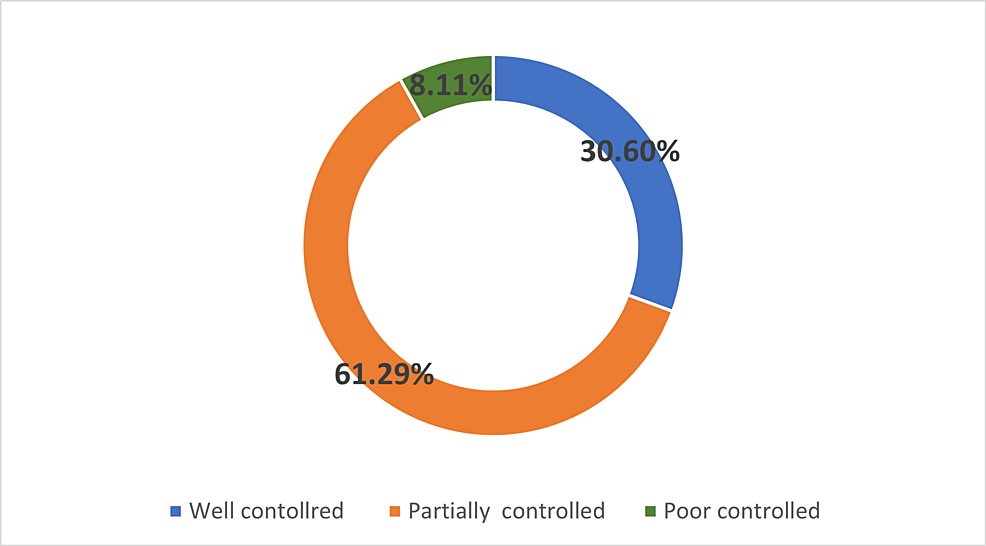Al Ghadeer H A, Aldandan J K, Alessa M A, et al. (January 01, 2024) Cureus 16(1): e51487. doi:10.7759/cureus.51487
Abstract
Introduction
A chronic diverse inflammatory disease, asthma affects millions of people worldwide. To control asthma, standardized care is essential. Children with asthma who receive appropriate care have lower emergency room (ER) visits and hospital stays as well as a higher quality of life than children who do not receive appropriate care. We aim to evaluate the predictive variables of hospitalization and ER visits in children with asthma.
Methodology
In 2022 and 2023, a cross-sectional descriptive study was carried out on children with asthma and their caregivers who were attending primary health care clinics in the eastern region of Saudi Arabia. We used the Childhood Asthma Control Test (C-ACT) to evaluate asthma control.
A C-ACT score of less than 19 indicates uncontrolled childhood asthma. To investigate the relationships between the risk factors and the rate of ER visits and hospitalizations, we performed a multiple logistic descriptive analysis.Results
 |
| Asthma control among study children based on asthma control test |
Conclusion
Better asthma control in children and adolescents may be achieved by providing inexpensive asthma care services, more thorough parental and child education, and effective symptom management. These measures can help reduce exacerbations of asthma and the consequences that accompany them.

No comments:
Post a Comment